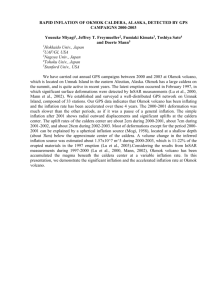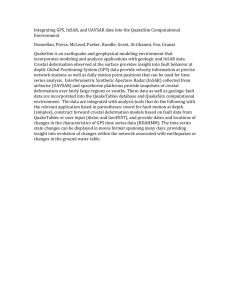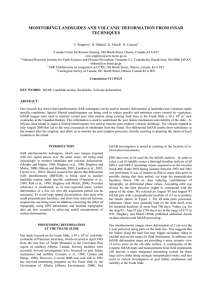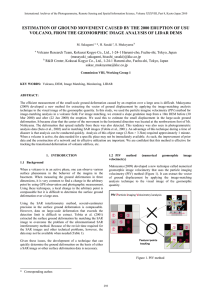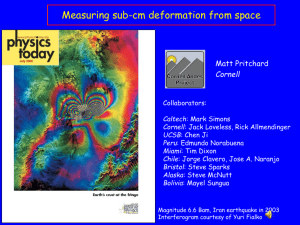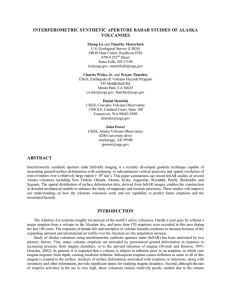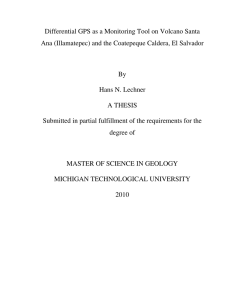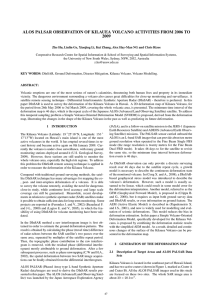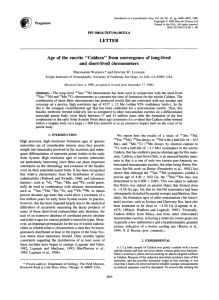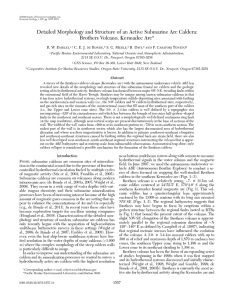RAPID AND TIME-VARIABLE INFLATION OF OKMOK VOLCANO,
advertisement
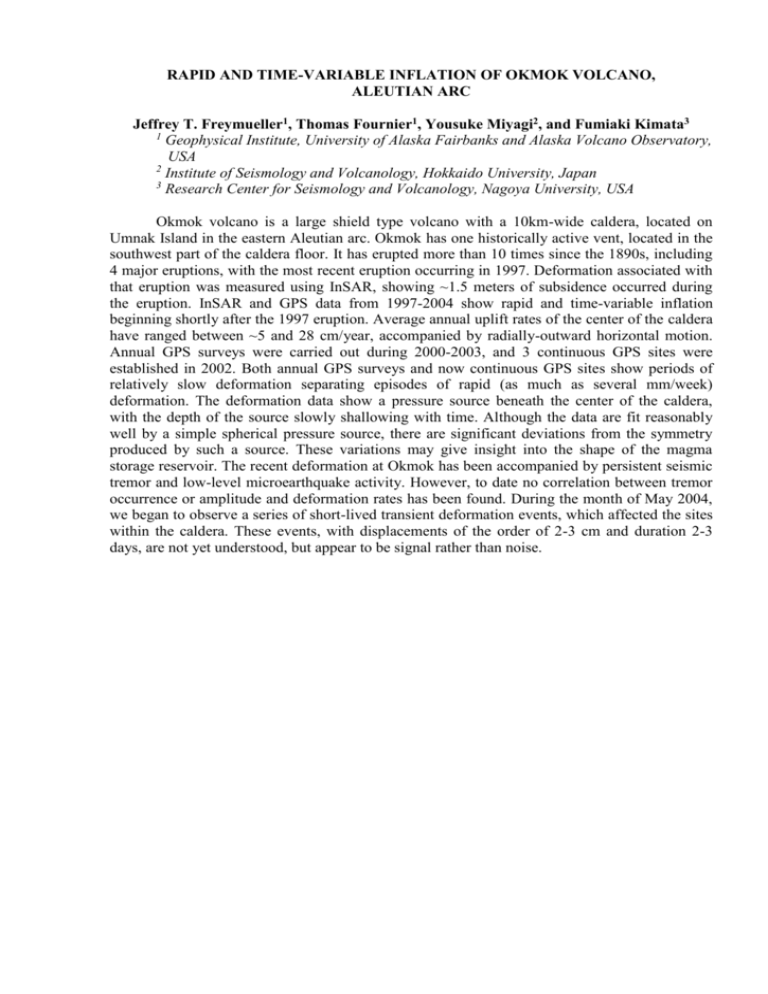
RAPID AND TIME-VARIABLE INFLATION OF OKMOK VOLCANO, ALEUTIAN ARC Jeffrey T. Freymueller1, Thomas Fournier1, Yousuke Miyagi2, and Fumiaki Kimata3 1 Geophysical Institute, University of Alaska Fairbanks and Alaska Volcano Observatory, USA 2 Institute of Seismology and Volcanology, Hokkaido University, Japan 3 Research Center for Seismology and Volcanology, Nagoya University, USA Okmok volcano is a large shield type volcano with a 10km-wide caldera, located on Umnak Island in the eastern Aleutian arc. Okmok has one historically active vent, located in the southwest part of the caldera floor. It has erupted more than 10 times since the 1890s, including 4 major eruptions, with the most recent eruption occurring in 1997. Deformation associated with that eruption was measured using InSAR, showing ~1.5 meters of subsidence occurred during the eruption. InSAR and GPS data from 1997-2004 show rapid and time-variable inflation beginning shortly after the 1997 eruption. Average annual uplift rates of the center of the caldera have ranged between ~5 and 28 cm/year, accompanied by radially-outward horizontal motion. Annual GPS surveys were carried out during 2000-2003, and 3 continuous GPS sites were established in 2002. Both annual GPS surveys and now continuous GPS sites show periods of relatively slow deformation separating episodes of rapid (as much as several mm/week) deformation. The deformation data show a pressure source beneath the center of the caldera, with the depth of the source slowly shallowing with time. Although the data are fit reasonably well by a simple spherical pressure source, there are significant deviations from the symmetry produced by such a source. These variations may give insight into the shape of the magma storage reservoir. The recent deformation at Okmok has been accompanied by persistent seismic tremor and low-level microearthquake activity. However, to date no correlation between tremor occurrence or amplitude and deformation rates has been found. During the month of May 2004, we began to observe a series of short-lived transient deformation events, which affected the sites within the caldera. These events, with displacements of the order of 2-3 cm and duration 2-3 days, are not yet understood, but appear to be signal rather than noise.
